Balkinization
an unanticipated consequence of
Jack M. Balkin
Balkinization Symposiums: A Continuing List
E-mail:
Jack Balkin:
jackbalkin at yahoo.com
Bruce Ackerman
bruce.ackerman at yale.edu
Ian Ayres
ian.ayres at yale.edu
Corey Brettschneider
corey_brettschneider at brown.edu
Mary Dudziak
mary.l.dudziak at emory.edu
Joey Fishkin
joey.fishkin at gmail.com
Heather Gerken heather.gerken at yale.edu
Abbe Gluck abbe.gluck at yale.edu
Mark Graber
mgraber at law.umaryland.edu
Stephen Griffin
sgriffin at tulane.edu
Jonathan Hafetz
jonathan.hafetz at shu.edu
Jeremy Kessler
jkessler at law.columbia.edu
Andrew Koppelman
akoppelman at law.northwestern.edu
Marty Lederman
msl46 at law.georgetown.edu
Sanford Levinson
slevinson at law.utexas.edu
David Luban
david.luban at gmail.com
Gerard Magliocca
gmaglioc at iupui.edu
Jason Mazzone
mazzonej at illinois.edu
Linda McClain
lmcclain at bu.edu
John Mikhail
mikhail at law.georgetown.edu
Frank Pasquale
pasquale.frank at gmail.com
Nate Persily
npersily at gmail.com
Michael Stokes Paulsen
michaelstokespaulsen at gmail.com
Deborah Pearlstein
dpearlst at yu.edu
Rick Pildes
rick.pildes at nyu.edu
David Pozen
dpozen at law.columbia.edu
Richard Primus
raprimus at umich.edu
K. Sabeel Rahmansabeel.rahman at brooklaw.edu
Alice Ristroph
alice.ristroph at shu.edu
Neil Siegel
siegel at law.duke.edu
David Super
david.super at law.georgetown.edu
Brian Tamanaha
btamanaha at wulaw.wustl.edu
Nelson Tebbe
nelson.tebbe at brooklaw.edu
Mark Tushnet
mtushnet at law.harvard.edu
Adam Winkler
winkler at ucla.edu
Compendium of posts on Hobby Lobby and related cases
The Anti-Torture Memos: Balkinization Posts on Torture, Interrogation, Detention, War Powers, and OLC
The Anti-Torture Memos (arranged by topic)
Recent Posts
Investigating a Unitary Executive Model of Immigration
Just A Few Blogs
ACS Blog
Alas, a Blog
Althouse
Arts and Letters Daily
Atrios (Eschaton)
Bill of Health
Buzzflash.com
Buzz Machine
Cato at Liberty
Juan Cole (Informed Comment)
Concurring Opinions
The Constitution in 2020
Corrente
Crooked Timber
Daily Howler
Daily Kos
Dana Boyd
Brad DeLong
Digby (Hullabaloo)
Discriminations
Daniel Drezner
Kevin Drum (Mother Jones)
Electrolite
En Banc
Eunomia (Daniel Larison)
Fafblog
Michael Froomkin (Discourse.net)
GovLab (Beth Noveck)
Rick Hasen (Election Law)
History News Network
How Appealing
Ignatz (Sam Heldman)
The Importance of (Ernie Miller)
Infolaw
Instapundit
International Economic Law and Policy Blog
IntLawGrrls
Jacob Levy
Jesus' General
Jurisdynamics
The Kitchen Cabinet
Mark Kleiman
Law Blog Central
Larry Lessig
Lawyers, Guns and Money
Liberal Oasis
Brian Leiter's Law School Reports
The Leiter Reports
Marginal Revolution
Megan McArdle
Memeorandum
Metafilter
Mirror of Justice
The New Republic
Newseum
No More Mister Nice Blog
Brendan Nyhan
Opinio Juris
Orcinus
The Originalism Blog
Pandagon
Passport (Foreign Policy)
Overcoming Bias
Political Animal (Washington Monthly)
Political Theory Daily Review
Political Wire (Taegan Goddard)
The Poor Man
Virginia Postrel
Prawfsblawg
Public Reason
Jonathan Rauch
Raw Story
Redstate
ReligiousLeftLaw.com
Reporters Committee For Freedom of the Press
Reproductive Rights Blog
Rothman's Roadmap to the Right of Publicity
SCOTUS Blog
Seeing the Forest
Clay Shirky
The Shifted Librarian
The Situationist
Larry Solum (Legal Theory)
Andrew Sullivan
Talking Points Memo
Talk Left
Tapped
Tbogg
TechPresident
The Paper Chase (Jurist)
Tom Paine
Tom Tomorrow (This Modern World)
Eve Tushnet
Uggabugga
University of Chicago Law School Faculty Blog
Unqualified Offerings
The Volokh Conspiracy
War and Piece (Laura Rozen)
Wampum
Oliver Willis
Wonkette
Written Description
Matthew Yglesias
Yin
Your Choice of Feeds
1. XML
powered by
2. Atom Feed
3. RSS 2.0
Investigating a Unitary Executive Model of Immigration
Guest Blogger
Bijal Shah
In The
President and Immigration Law, Professors Adam B. Cox and Cristina M. Rodríguez
offer a comprehensive and expert account of the President’s power to control
the implementation of immigration law.
To do so, they present a careful exposition of the dynamic relationship
between the political branches that both sheds light on the immigration
apparatus and has broader implications for structural constitutionalism and
administrative law. For this reason,
their book is an important contribution not only to the immigration canon, but to
constitutional and administrative law literature as well.
Cox
and Rodríguez’s tour de force argues that the President has sweeping immigration
power, beyond the explicit authority granted to him by Congress to exclude and
parole noncitizens in sweeping terms.
More specifically, the authors claim that by virtue of the discretion accorded
the immigration bureaucracy, the President has substantial, overarching control
over immigration enforcement too.
Further, they assert that this de facto delegation to the
President is rendered legitimate by virtue of his constitutional authority. This argument is supported as a general
matter by unitary executive theory, which insists that the President has the constitutional
authority to exercise all of the policymaking and decisionmaking discretion
delegated to administrative agencies. In
contrast, those with a more moderate view of presidentialism argue that it is unconstitutional
for the President to “step into the shoes” of agency officials and exercise
discretion in their place.
The
provocative implication of the authors’ argument is that any exercise of
discretion by the immigration bureaucracy is subject to highly-centralized control
by the President, as opposed to merely his direction. In addition, the authors argue that tightening
the reins can promote a more temperate regime of immigration enforcement. In this contribution to a symposium on Cox
and Rodríguez’s exceptionally stimulating new work, I offer a caveat to their
claim that the immigration bureaucracy is highly subject to presidential
control; challenge, to some extent, their contention that a unitary Executive
holds promise for advancing moderation in immigration enforcement; and suggest a
mitigated approach to presidentialism as a way to further their ideal of sensible
immigration enforcement.
But Congress has entrenched
its preferences for enforcement in the bureaucracy by design. The authors are correct that Congress cannot
legislate value judgments with specificity for every immigration administrator. However, Congress founded the immigration
system on an ethos of ethnicity-based exclusion as a general matter, and their
expansion of the system on this basis has not been stymied by the President in
any significant way. In addition, Congress
(in this case, with the full participation of the President) has reorganized
the immigration agencies to emphasize the use of law enforcement practices to
coerce and exclude noncitizens, as a response to the national fear of terrorism
of foreign origin. I should note here
that it could have been otherwise.
Congress could have built a model based on affirmative inclusion (beyond
the shadow of this approach that exists in the business immigration system). Imagine, if you will, a world where Congress
mandates a set of floors for immigration, instead of ceilings, and calls on the
bureaucracy to actively solicit the inclusion of noncitizens domestically and
abroad in the name of multiculturalism.
But I will save this wistful musing, which builds on the book’s
inspiring epilogue, for another time.
Cox and Rodríguez provide a careful
chronology of the origins of immigration in race-based exclusion, and its
growth on those terms. In addition, it
bears noting that in the mid-twentieth century, the Immigration and
Naturalization Service (INS) was moved from the Department of Labor, an agency that
makes decisions based on socio-economic principles, to the Department of
Justice (DOJ), a law enforcement agency.
Also, as is well-known, the INS was split into several agency
subcomponents after the events of Sept. 11, 2001, many of which were packed
into a new agency with the primary mandate of protecting “homeland
security.”
In the new Department of
Homeland Security (DHS), the affirmative benefits arm of immigration, U.S.
Citizenship and Immigration Services (USCIS), was boxed in by a series of
subcomponents designed to impact multiple areas of regulation in the pursuit of
exclusion, including the Immigration and Customs Enforcement (ICE), Customs and
Border Patrol (CBP) and the Transportation Security Administration (TSA). In addition, USCIS was put under pressure by
headquarters DHS to conform their decisions to the new order: maintain national
security at all costs. (As an aside, it was interesting to work at USCIS under
President Bush II, where a hodgepodge of former INS employees, the
humanitarian-minded and new blood lived in fear of making a decision that might
lead to the next terrorist attack. It
was not uncommon for asylum applicants from the Middle East to be put “on hold”
indefinitely as a result of generalized anxiety alone.) As a matter of course, the highest levels of
immigration adjudication, housed in the Executive Office for Immigration
Review, remained in DOJ instead of being accorded their own agency (as might
befit impartial and expert administrative decisionmaking).
In other words, the system has
been built to exclude, and this predominant legislative mandate colors the
decisions of all front-line immigration bureaucrats today. In addition, it is a result of the
amplification of this mandate after 9/11 that civil servants have been trained
in a police force mentality and nationalist ideologies with such gusto, and it
is this mandate that has exacerbated the harsh treatment of noncitizens, often
bordering on the inhumane, in what is ostensibly a regulatory area that engages
in civil enforcement only.
As a prescriptive matter, what
does the institutional entrenchment of enforcement mean for the President’s capacity
to constrain the bureaucratic practice of severe exclusion in a lasting manner (assuming
that future presidents will choose to pursue this goal)? Barring the passage of comprehensive immigration
legislation, Cox and Rodríguez argue, centralized Executive decisionmaking (including
as a result of the statutory expansion of the President’s power to admit
temporarily) is the best avenue for mitigating the current state of affairs.
I think that centralization
is a start, but it is not enough (and possibly unconstitutional if imposed
without taking into account the role of administrators). And sometimes, centralization may even be
counterproductive. To limit excessive
exclusion and deportation by a bureaucracy in which a culture of enforcement exists
as a matter of institutional design, a willing President must also 1)
dislodge the bureaucratic predilection for exclusion, such that his vision is
properly executed and remains stable after he is out of office, and 2) embed in
its place a self-sustaining spirit of expert, principled and inclusive decisionmaking. While I set aside the heavily-debated, normative
question of whether the unitary executive model is constitutional, my
prescription nonetheless proposes a softer presidentialism in part to reduce the
potential for constitutional problems.
First, the President must
both exercise centralized supervision over the exercise of discretion, and
carefully integrate his approaches into the workings of the bureaucracy in
order to gain purchase. Both Obama and
Trump understood this intuitively, and each applied this tactic to the segment of
the immigration bureaucracy most inclined to resist their measures. These Presidents turned not to parole power
(in the case of Obama) and not only to proclamations mandating sweeping changes
(in both cases), but also to measures that involved working deep within the
bureaucracy in order to root out the bureaucratic ideals and practices they preferred
least.
Regarding Obama, Cox and
Rodríguez identify the DACA program as preferable to the Morton Memos because
it centralized discretionary decisionmaking.
It did so, they argue, by laying out clear factors for exercising
prosecutorial discretion, instead of leaving it to lower-level civil servants to
exercise discretion on the basis of the relatively ambiguous criteria outlined
in the Memos. And it is true that the
DACA program centralized discretion in this manner.
But the DACA program had
another benefit as compared to other, perhaps even more centralized acts of
presidential control over immigration—in particular, the exercise of parole
power, which also tends to involve clear criteria constraining the bureaucracy’s
ability to deport. More specifically, the
DACA program permeated the exercise of bureaucratic discretion more broadly. Unlike decisions to parole, which are often
implemented by bureaucrats as specialized, isolated programs with a quota
and/or sunset, DACA infused a modest norm of deferring deportation into enforcement
decisions as a general matter (notwithstanding the popular and media emphasis
on the Dreamers). Accordingly, DACA
created a reliance
interest in the assurance against deportation that led, at least implicitly, to a Supreme Court decision
finding that the Trump Administration’s recission of the program was arbitrary
and capricious.
Similarly, our next President
must focus on ground-level changes to the exercise of discretion. In addition, he might consider, as Trump did,
getting his hands into the SOPs, policy manuals, procedures, memos, websites,
forms and other guidances that influence the work of immigration enforcement on
a day-to-day basis. The new President
might also try to shift internal hierarchies and hiring priorities to emphasize
the importance of inclusionary values. By
reshaping exclusion-focused agencies’ cultures, structures and decisionmaking
more generally, the President could nurture durable improvements to immigration
enforcement
Second, the next President
must rescue and revive expert analysis and impartial decisionmaking which has
been greatly deteriorated under the current administration. This view counsels against centralization, in
some cases. Indeed, it exhorts
Presidents to rein in the impulse to influence immigration adjudication, even
if that influence would serve goals of inclusion, and instead to channel power to
expert immigration institutions and firm up their insulation from partisan
interests. In this way, portions of the
bureaucracy could be empowered to act as a bulwark
against future demagogues in the White House (especially given evidence
that administrations seeking to maximize exclusion are more likely to interfere
in immigration adjudication). (Moderate
unilateralists need not fear, however, as Presidents can advocate for
agency independence and still maintain plenty of control over the
administrative state.)
Cox and Rodríguez dismiss the
benefits of administrative expertise by arguing that moral decisionmaking is
more important in the immigration context, and that the President is better
suited to this than the bureaucracy. I’m
not convinced of this. Beyond Trump’s
pandering to xenophobia, even Obama’s efforts in this regard were
compromised. He suffered blowback when
he suggested that the humanity of noncitizens deserved some consideration in immigration
enforcement. Even under his regime, the aim
of deterring terrorism was deemed worthy of pursuit at any cost. Instead of trying to act morally in the face
of intense political pressures, the President might do better to encourage an
institutional culture of discretionary decisionmaking on the basis of nuanced,
elastic analyses and application of economic, geo-political and humanitarian
principles. In other words, the
President would do well to engage in expertise-forcing (especially if Congress remains unwilling to do so, and the courts are
overwhelmed in this arena). Genuine,
measured experts would have to be hired back into the immigration bureaucracy,
since many have fled or been forced out.
Once installed, they would be better positioned than political leaders,
in many cases, to engage in the data-based exercise of discretion, especially if
armed with adequate resources and allowed the protection and freedom to do so
regardless of who is in office.
This approach would allow
Presidents to not only pull the civil service back from its current, maximalist
approach to enforcement, but to reinforce the bureaucratic components of
immigration law that already have some of the structures, unique (albeit
currently suppressed) mandates and personnel required to foster inclusion. USCIS and EOIR, as well as the Departments of
State and Health and Human Services, have both dormant and unrealized potential
to implement principled immigration policy.
Encouraging decentralization in agencies such as these would complement
the next President’s efforts to centralize, constrain and hopefully alter the institutional
makeup of agencies/agency subcomponents like ICE, CBP and the like that are otherwise
animated by exclusion, fear and norms of law enforcement. Note that this is not the ex ante
version of inclusion that the authors identify and reject based on its
indeterminacy. Rather, this suggestion
envisions progress towards inclusion accomplished by the executive branch ex
post.
Note, finally, that working
within the system, as opposed to exercising parole power or issuing executive
orders, also allows the President to avoid some of the criticism that
accompanies more unembellished unilateral action. Cox and Rodríguez note the public’s initial
disapproval of Obama’s centralized immigration plan. And as much attention as Trump drew for his
hysterical approach to immigration, the popular critique was aimed at his high-level
exclusion of swathes of people, as opposed to the ways in which he used
political control to magnify the more extreme impulses of immigration
enforcement officials and grind down norms of expertise and impartiality. But I suspect that while the former will be
erased by a strike of the new President’s pen, the latter will endure—unless
the new administration pays it focused attention. By working at the ground level, the next President
could displace the culture of maximal enforcement and infuse the bureaucracy
with revamped and revitalized criteria for more inclusive and expert exercises
of discretion. This could serve both to usher
in and to entrench, to some extent, an immigration system that is more
fair-minded and less fear-based, despite the constraints of institutional
design.
Bijal Shah is Associate
Professor of Law at Arizona State University, Sandra Day O’Connor College of
Law. You can reach her by e-mail at Bijal.Shah@asu.edu
Posted
9:30 AM
by Guest Blogger [link]
Books by Balkinization Bloggers

Gerard N. Magliocca, The Actual Art of Governing: Justice Robert H. Jackson's Concurring Opinion in the Steel Seizure Case (Oxford University Press, 2025)

Linda C. McClain and Aziza Ahmed, The Routledge Companion to Gender and COVID-19 (Routledge, 2024)

David Pozen, The Constitution of the War on Drugs (Oxford University Press, 2024)

Jack M. Balkin, Memory and Authority: The Uses of History in Constitutional Interpretation (Yale University Press, 2024)
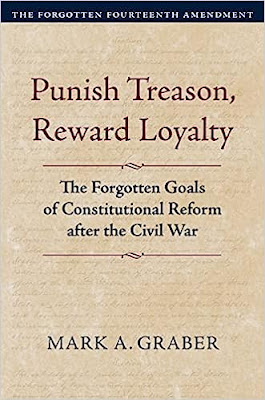
Mark A. Graber, Punish Treason, Reward Loyalty: The Forgotten Goals of Constitutional Reform after the Civil War (University of Kansas Press, 2023)
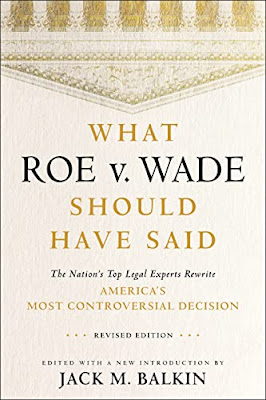
Jack M. Balkin, What Roe v. Wade Should Have Said: The Nation's Top Legal Experts Rewrite America's Most Controversial Decision - Revised Edition (NYU Press, 2023)

Andrew Koppelman, Burning Down the House: How Libertarian Philosophy Was Corrupted by Delusion and Greed (St. Martin’s Press, 2022)

Gerard N. Magliocca, Washington's Heir: The Life of Justice Bushrod Washington (Oxford University Press, 2022)
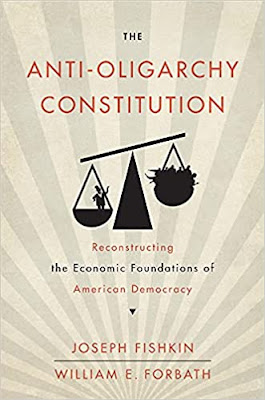
Joseph Fishkin and William E. Forbath, The Anti-Oligarchy Constitution: Reconstructing the Economic Foundations of American Democracy (Harvard University Press, 2022)
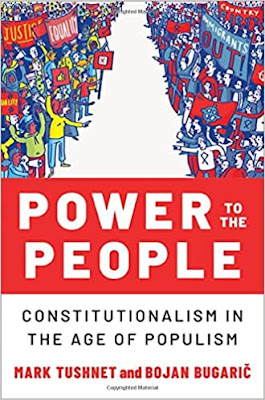
Mark Tushnet and Bojan Bugaric, Power to the People: Constitutionalism in the Age of Populism (Oxford University Press 2021).

Mark Philip Bradley and Mary L. Dudziak, eds., Making the Forever War: Marilyn B. Young on the Culture and Politics of American Militarism Culture and Politics in the Cold War and Beyond (University of Massachusetts Press, 2021).

Jack M. Balkin, What Obergefell v. Hodges Should Have Said: The Nation's Top Legal Experts Rewrite America's Same-Sex Marriage Decision (Yale University Press, 2020)

Frank Pasquale, New Laws of Robotics: Defending Human Expertise in the Age of AI (Belknap Press, 2020)

Jack M. Balkin, The Cycles of Constitutional Time (Oxford University Press, 2020)

Mark Tushnet, Taking Back the Constitution: Activist Judges and the Next Age of American Law (Yale University Press 2020).

Andrew Koppelman, Gay Rights vs. Religious Liberty?: The Unnecessary Conflict (Oxford University Press, 2020)

Ezekiel J Emanuel and Abbe R. Gluck, The Trillion Dollar Revolution: How the Affordable Care Act Transformed Politics, Law, and Health Care in America (PublicAffairs, 2020)

Linda C. McClain, Who's the Bigot?: Learning from Conflicts over Marriage and Civil Rights Law (Oxford University Press, 2020)
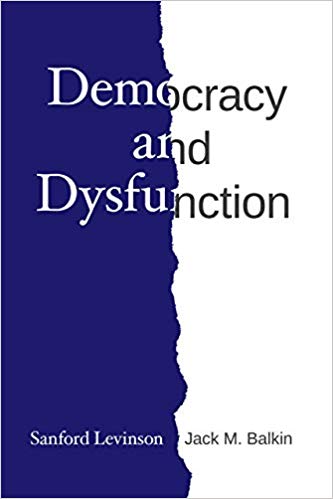
Sanford Levinson and Jack M. Balkin, Democracy and Dysfunction (University of Chicago Press, 2019)

Sanford Levinson, Written in Stone: Public Monuments in Changing Societies (Duke University Press 2018)

Mark A. Graber, Sanford Levinson, and Mark Tushnet, eds., Constitutional Democracy in Crisis? (Oxford University Press 2018)

Gerard Magliocca, The Heart of the Constitution: How the Bill of Rights became the Bill of Rights (Oxford University Press, 2018)

Cynthia Levinson and Sanford Levinson, Fault Lines in the Constitution: The Framers, Their Fights, and the Flaws that Affect Us Today (Peachtree Publishers, 2017)

Brian Z. Tamanaha, A Realistic Theory of Law (Cambridge University Press 2017)

Sanford Levinson, Nullification and Secession in Modern Constitutional Thought (University Press of Kansas 2016)

Sanford Levinson, An Argument Open to All: Reading The Federalist in the 21st Century (Yale University Press 2015)

Stephen M. Griffin, Broken Trust: Dysfunctional Government and Constitutional Reform (University Press of Kansas, 2015)

Frank Pasquale, The Black Box Society: The Secret Algorithms That Control Money and Information (Harvard University Press, 2015)

Bruce Ackerman, We the People, Volume 3: The Civil Rights Revolution (Harvard University Press, 2014)
Balkinization Symposium on We the People, Volume 3: The Civil Rights Revolution

Joseph Fishkin, Bottlenecks: A New Theory of Equal Opportunity (Oxford University Press, 2014)

Mark A. Graber, A New Introduction to American Constitutionalism (Oxford University Press, 2013)

John Mikhail, Elements of Moral Cognition: Rawls' Linguistic Analogy and the Cognitive Science of Moral and Legal Judgment (Cambridge University Press, 2013)

Gerard N. Magliocca, American Founding Son: John Bingham and the Invention of the Fourteenth Amendment (New York University Press, 2013)

Stephen M. Griffin, Long Wars and the Constitution (Harvard University Press, 2013)

Andrew Koppelman, The Tough Luck Constitution and the Assault on Health Care Reform (Oxford University Press, 2013)

James E. Fleming and Linda C. McClain, Ordered Liberty: Rights, Responsibilities, and Virtues (Harvard University Press, 2013)
Balkinization Symposium on Ordered Liberty: Rights, Responsibilities, and Virtues

Andrew Koppelman, Defending American Religious Neutrality (Harvard University Press, 2013)

Brian Z. Tamanaha, Failing Law Schools (University of Chicago Press, 2012)

Sanford Levinson, Framed: America's 51 Constitutions and the Crisis of Governance (Oxford University Press, 2012)

Linda C. McClain and Joanna L. Grossman, Gender Equality: Dimensions of Women's Equal Citizenship (Cambridge University Press, 2012)

Mary Dudziak, War Time: An Idea, Its History, Its Consequences (Oxford University Press, 2012)

Jack M. Balkin, Living Originalism (Harvard University Press, 2011)

Jason Mazzone, Copyfraud and Other Abuses of Intellectual Property Law (Stanford University Press, 2011)

Richard W. Garnett and Andrew Koppelman, First Amendment Stories, (Foundation Press 2011)

Jack M. Balkin, Constitutional Redemption: Political Faith in an Unjust World (Harvard University Press, 2011)

Gerard Magliocca, The Tragedy of William Jennings Bryan: Constitutional Law and the Politics of Backlash (Yale University Press, 2011)

Bernard Harcourt, The Illusion of Free Markets: Punishment and the Myth of Natural Order (Harvard University Press, 2010)

Bruce Ackerman, The Decline and Fall of the American Republic (Harvard University Press, 2010)
Balkinization Symposium on The Decline and Fall of the American Republic

Ian Ayres. Carrots and Sticks: Unlock the Power of Incentives to Get Things Done (Bantam Books, 2010)

Mark Tushnet, Why the Constitution Matters (Yale University Press 2010)
Ian Ayres and Barry Nalebuff: Lifecycle Investing: A New, Safe, and Audacious Way to Improve the Performance of Your Retirement Portfolio (Basic Books, 2010)
.jpg)
Jack M. Balkin, The Laws of Change: I Ching and the Philosophy of Life (2d Edition, Sybil Creek Press 2009)

Brian Z. Tamanaha, Beyond the Formalist-Realist Divide: The Role of Politics in Judging (Princeton University Press 2009)
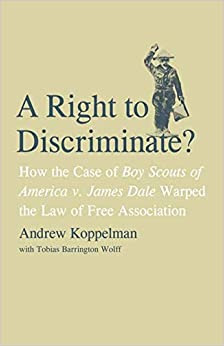
Andrew Koppelman and Tobias Barrington Wolff, A Right to Discriminate?: How the Case of Boy Scouts of America v. James Dale Warped the Law of Free Association (Yale University Press 2009)

Jack M. Balkin and Reva B. Siegel, The Constitution in 2020 (Oxford University Press 2009)
Heather K. Gerken, The Democracy Index: Why Our Election System Is Failing and How to Fix It (Princeton University Press 2009)

Mary Dudziak, Exporting American Dreams: Thurgood Marshall's African Journey (Oxford University Press 2008)

David Luban, Legal Ethics and Human Dignity (Cambridge Univ. Press 2007)

Ian Ayres, Super Crunchers: Why Thinking-By-Numbers is the New Way to be Smart (Bantam 2007)

Jack M. Balkin, James Grimmelmann, Eddan Katz, Nimrod Kozlovski, Shlomit Wagman and Tal Zarsky, eds., Cybercrime: Digital Cops in a Networked Environment (N.Y.U. Press 2007)
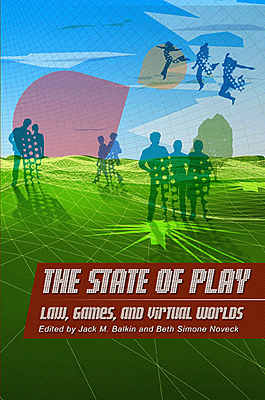
Jack M. Balkin and Beth Simone Noveck, The State of Play: Law, Games, and Virtual Worlds (N.Y.U. Press 2006)

Andrew Koppelman, Same Sex, Different States: When Same-Sex Marriages Cross State Lines (Yale University Press 2006)
Brian Tamanaha, Law as a Means to an End (Cambridge University Press 2006)
Sanford Levinson, Our Undemocratic Constitution (Oxford University Press 2006)
Mark Graber, Dred Scott and the Problem of Constitutional Evil (Cambridge University Press 2006)
Jack M. Balkin, ed., What Roe v. Wade Should Have Said (N.Y.U. Press 2005)
Sanford Levinson, ed., Torture: A Collection (Oxford University Press 2004)
Balkin.com homepage
Bibliography
Conlaw.net
Cultural Software
Writings
Opeds
The Information Society Project
BrownvBoard.com
Useful Links
Syllabi and Exams